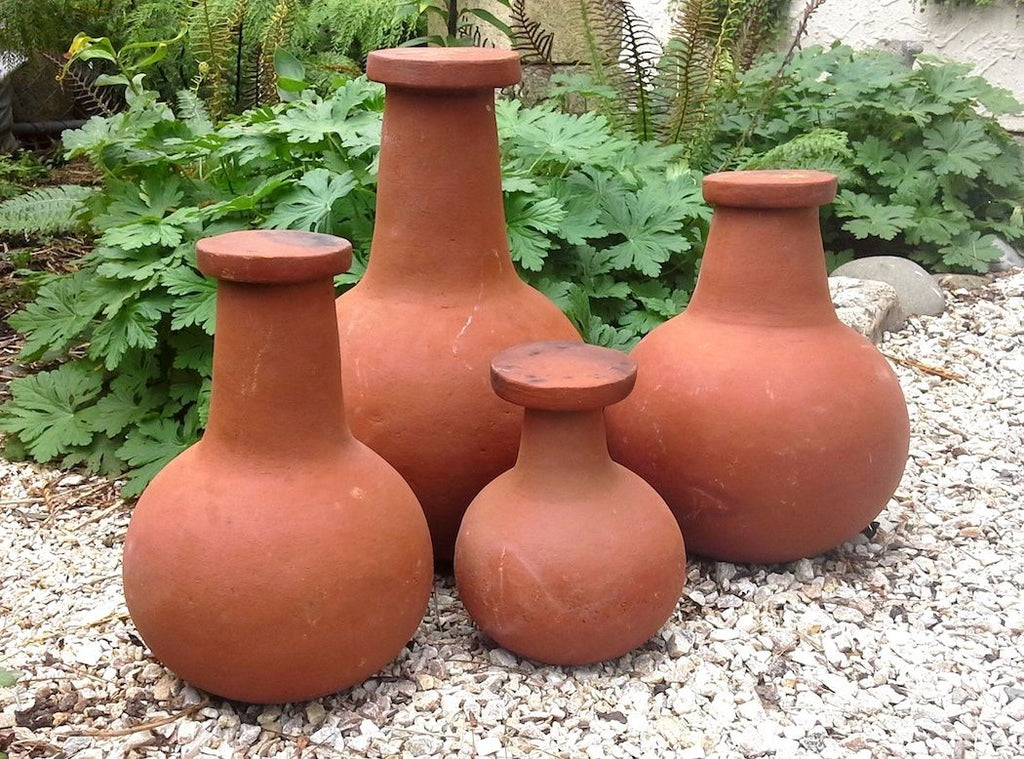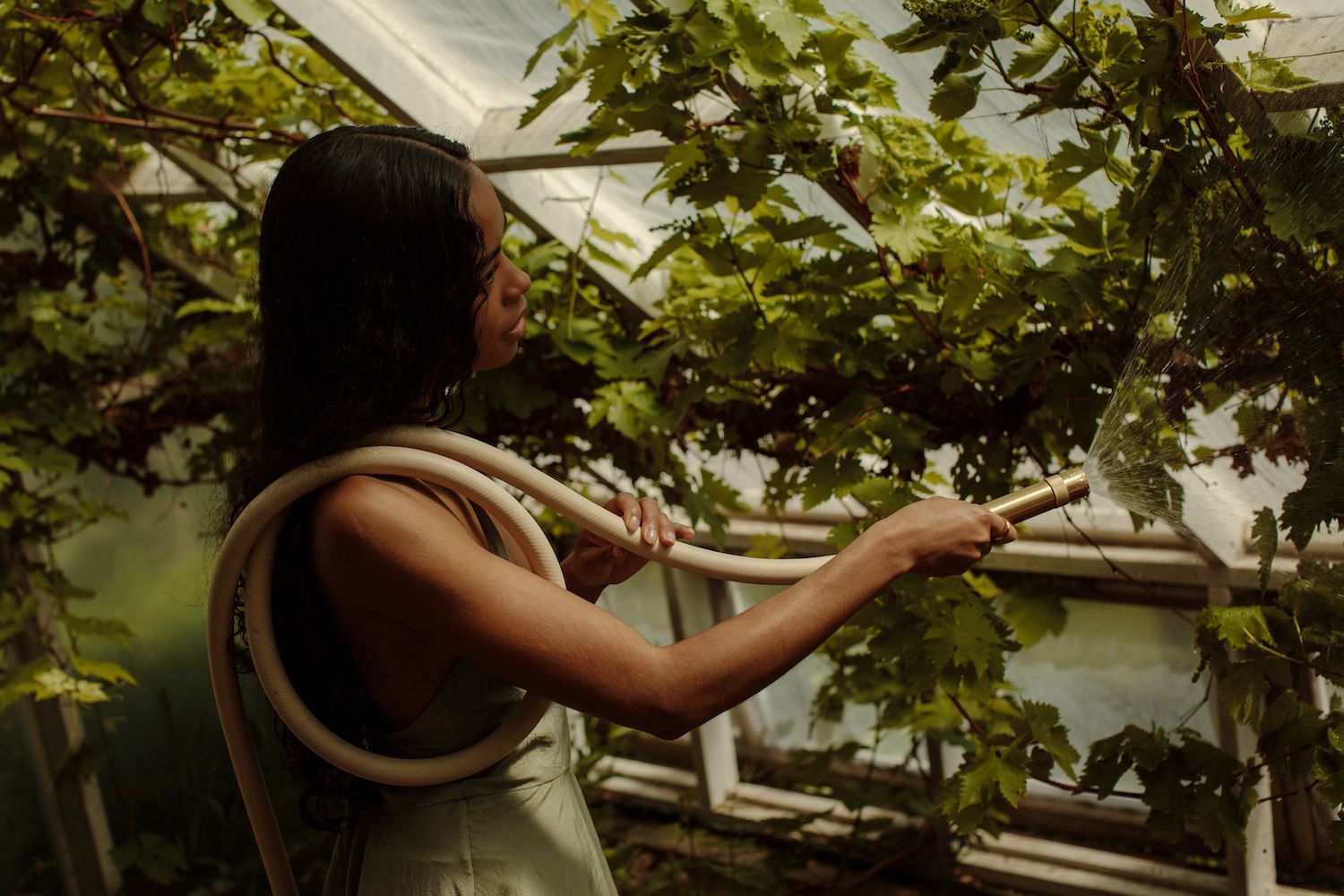Cultivating a garden of any size is one of the most rewarding activities we can undertake as humans. Ensuring everything is well-watered is an essential part of the process.
At the same time, we’re increasingly aware of water being a precious resource and the need for better conservation efforts. Even if water seems an abundant resource right now in your region, when you consider the wildfires, warmer temperatures, and seasonal droughts, it’s clear that water conservation is increasingly a global issue. There can be a lot of wastage when watering your garden, from evaporation with sprinklers and spray systems to run-off and watering when it’s not needed.
Below we’ve gathered some of the best tips for watering to keep your garden healthy and abundant while conserving water.
1 / Water Early
The best time to water is early in the morning when sunlight is weaker, the ground is cool, and foliage has hours to dry. Aim for sometime before 10 am. If you water in the evening, be early—wet greenery and warm soil may attract insects, fungus, and disease.

2 / Water Deeply
Help roots develop by watering deeply and less often. Soaking the soil 5 to 6 inches deep encourages plants to grow deeper roots. However, you’ll want to avoid overwatering which can lead to root rot. Consider using a moisture meter to find the right balance for your plants.

3 / Water Mindfully
Make garden watering part of a regular ritual, where you start your day in the calm of your growing space. Before you turn on the hose, pay your plants a close visit to see how they’re doing and if they even require watering. Shrubs and trees require water less often than other vegetation, and if it rained you'll likely skip watering.
When you do turn on the hose, pay attention to directing water to the base of the plant, not the foliage. In hotter temps, this move helps limit evaporation.

4 / Collect Water
Collect, store, and use as much rainwater from your property as possible for a more sustainable garden. Reusing rainwater is the easiest and probably the most effective water conservation method. Look for a rain barrel with a faucet or hose connection, and start collecting this precious resource.
5 / Reuse Water
Besides using rainwater to irrigate your garden you can reclaim household water or ‘greywater’ from appliances and tubs. This type of household wastewater might have mild detergents in it but can still be reused for watering plants.
We recommend water upcycling to GOODLAND Hot Tub owners (read about it in Eco-Friendly, Natural Hot Tubs)—but check that it’s permitted in your area. We don’t recommend using greywater on plants whose edible portions contact the ground, like root vegetables.

6 / Choose the Right Watering Tools for Your Garden
Often multiple watering tools are needed to get the job done. Your selection will depend on what you’re watering and how much time you have to spare. Some of our favourites are:
- Durable non-kinking garden hose in the right length for your outdoor space
- Adjustable nozzle
- Soaker hose for garden beds
- Water shut-off valve to reduce water wastage
- Moisture or rain gauge
- Watering can with long spout or watering wand for hard-to-reach spots
7 / Choose the Right Containers for Your Region
Some containers, like terracotta pots or black metal planters, are susceptible to overheating in hot weather. To eliminate watering these several times a day, position the container in a spot with more shade, move it off of a hot surface, or replant it in a better-suited container. Ceramic pots, lighter colours, and larger sized containers will reduce water needs. Help your potted plants retain water by mulching the top and standing them in saucers filled with moist sand.

8 / Use Olla Watering Pots
Similar to self-watering stakes but on a larger scale, ollas keep your vegetable patch and garden bed well watered. This ancient technique efficiently irrigates crops through burying an unglazed terracotta urn in the soil, filling it with water, and topping it with a lid. Water slowly seeps through the porous pot into the earth, feeding the surrounding roots. Water stops seeping when the soil around the pot is sufficiently moist. If you can’t find ollas in your area, DIY with a terracotta plant pot online tutorial.
9 / Use Mulch
It may seem like an odd garden watering tip, but adding a layer of mulch to your garden bed decreases your plants’ water needs. Mulch keeps the soil cool and limits moisture loss—not to mention it saves you from some weeding. Generally 2” or 55 mm of mulch will do the trick, still allowing rainwater through to the soil.

10/ Consider Self-Watering Garden Beds and Planters
Create or buy a self-watering container to cut down on the task of watering, decrease water wastage, and help plants survive when their water needs increase. They’re also great to have when you’re away from your garden. Designed with a reservoir to hold excess water below the soil, these containers allow plant roots to reach below and wick up water only when they need it. Like ollas, these are fairly easy to DIY or purchase.
For more tips related to gardening, see How to Choose a Garden Hose.
Image of olla watering pots via The Laidback Gardener



